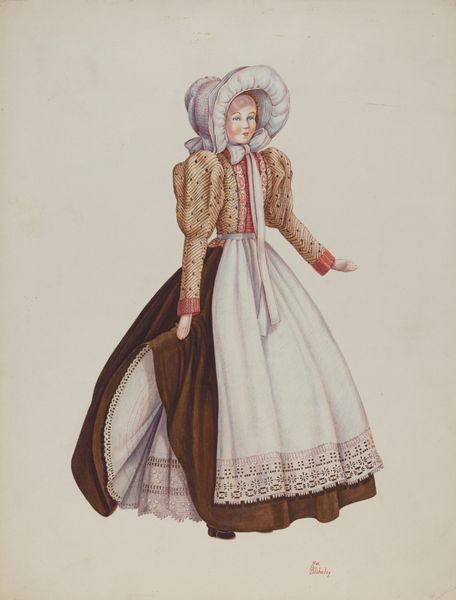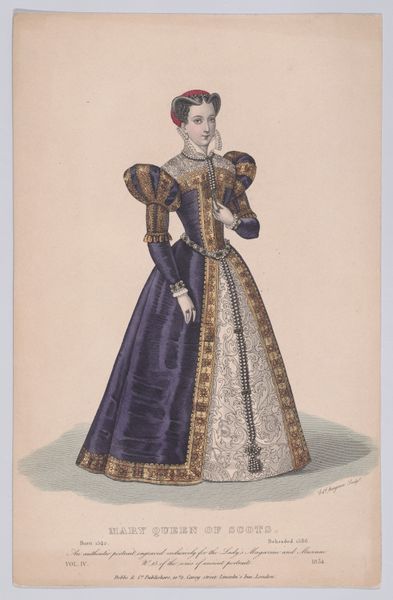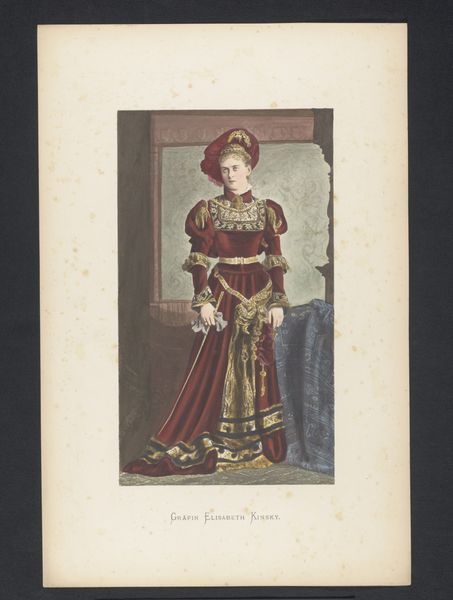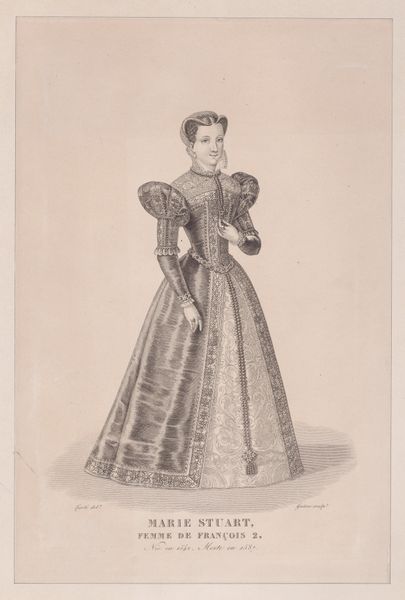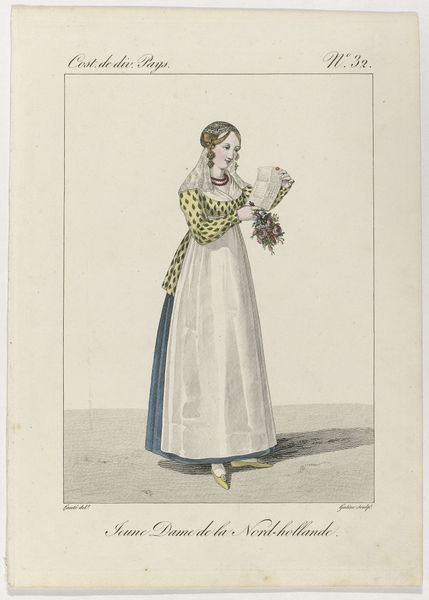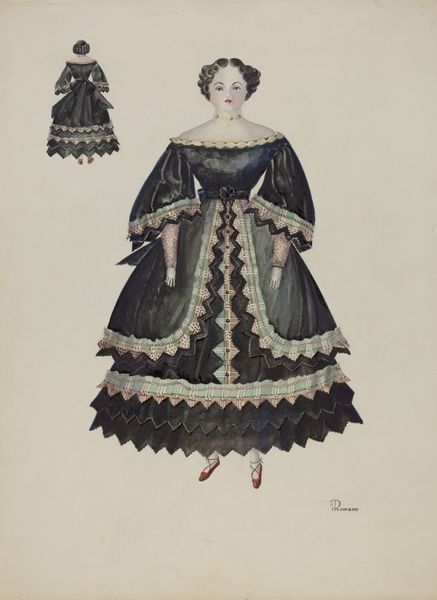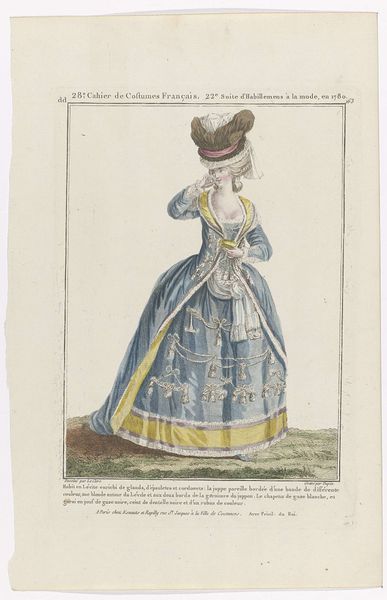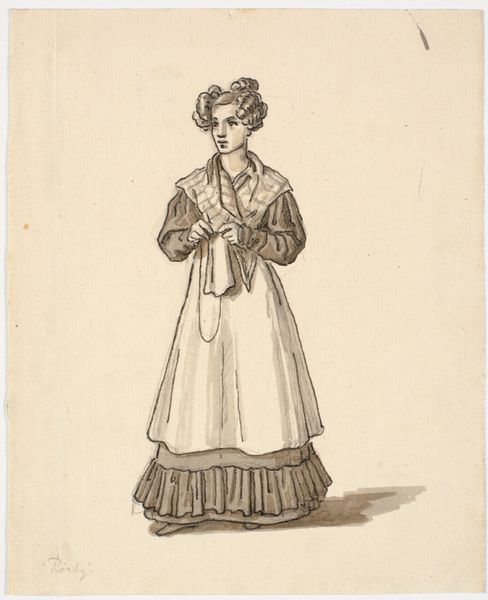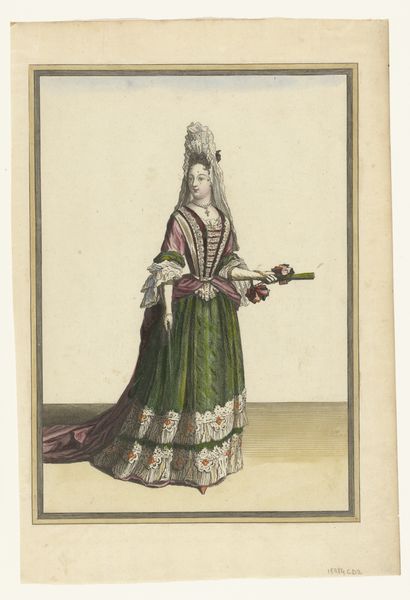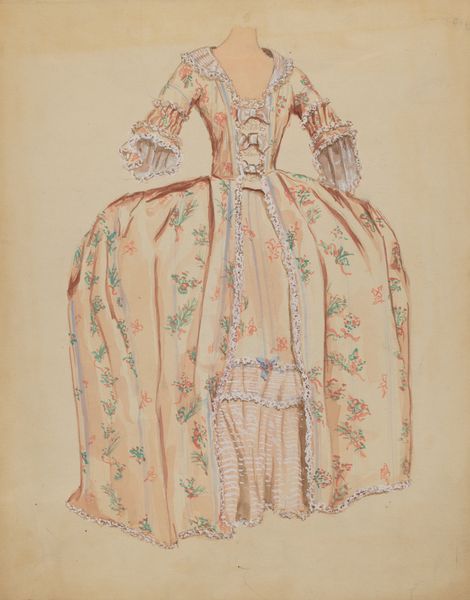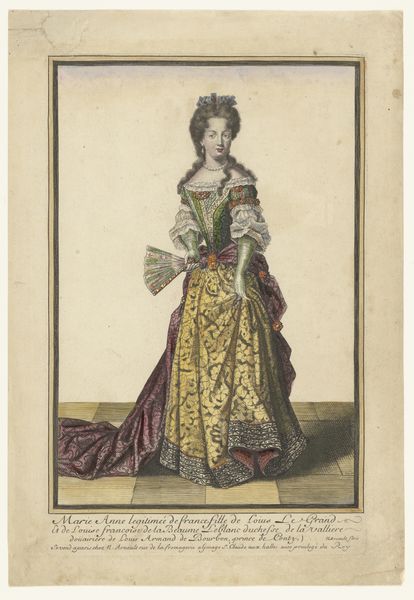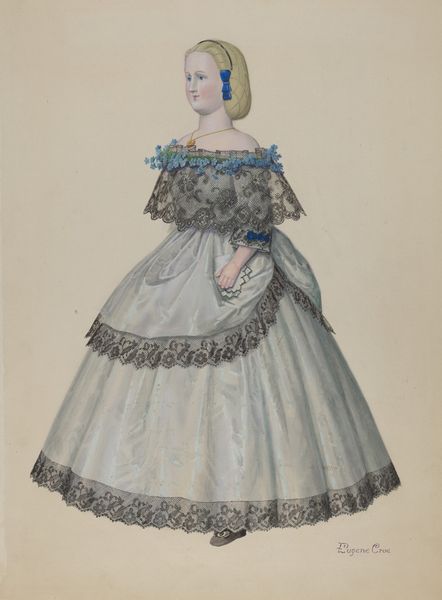
Mary, Queen of Scots as a Lady of Rank (from "Female costumes, historical, national, and dramatic," plate 163) 1860 - 1870
0:00
0:00
drawing, print
#
portrait
#
drawing
#
historical design
# print
#
historical fashion
#
watercolour illustration
#
history-painting
#
watercolor
Dimensions: Sheet (trimmed): 7 11/16 × 5 7/16 in. (19.5 × 13.8 cm)
Copyright: Public Domain
Editor: So this is "Mary, Queen of Scots as a Lady of Rank," a print by Thomas Hailes Lacy, dating from 1860 to 1870. I'm struck by the intricate detail of the dress and the relatively muted color palette. It feels quite formal and restrained. How do you read this piece, focusing on its intrinsic visual elements? Curator: Initially, I observe a rather strict formality conveyed through the composition. Consider the figure's verticality and the symmetrical arrangement of her garments. The dress, while ornate, exhibits a structured pattern, almost architectural in its rigidity. What effect do you think the artist was trying to achieve? Editor: Perhaps an air of regal authority and composed grace? The repeating motifs on the gown definitely lend it a sense of deliberate design rather than free-flowing expression. But, wouldn't focusing on such pure formalism erase some historical considerations about the image, that this is about a queen of Scots after all? Curator: Not entirely. The dress's details contribute to its message. Notice the gold tracery and the placement of the gemstones - these visually signify status. Furthermore, the contrast between the rigid structure of the gown and the organic floral motifs introduces a tension. A deliberate interplay of control and nature. Editor: That’s a clever observation! I hadn't thought of the contrast that way. So, we’re using these formal elements to build an understanding, like a language of design that tells a silent story about the figure? Curator: Precisely. We decode the artist's intent through the arrangement of line, color, form, and their semiotic relationship to one another. Editor: It’s interesting how this close reading provides an alternative way to consider the work. It brings into focus aspects I wouldn’t have initially appreciated, just looking at the image as a historical representation. Curator: Agreed. Analyzing the intrinsic visual components enables a much more rigorous engagement with any work.
Comments
No comments
Be the first to comment and join the conversation on the ultimate creative platform.
